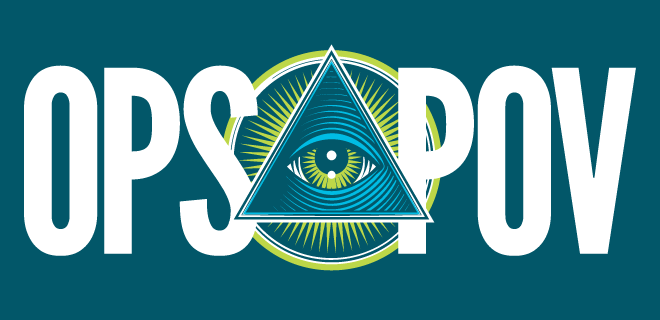
Jana Meron, the founder of Lioness Strategies and seasoned digital media monetization and data strategy leader, is passionate about the world of digital ad tech.
It’s a passion driven by a love of media and its role in our society. As of late, she worries about publishers and their ability to adapt to the impending cookie doom (along with the advertiser’s increasing unwillingness to fund the news).
But she’s also optimistic that publishers can diversify their revenue and better engage their readers, and she has made it her mission to help them achieve those goals. We talked to her about publishers’ current risks and opportunities and how they can plot a path forward.
Helping Publishers Adapt and Thrive in an Ever-changing Digital Media World
Susie Stulz: Why did you start Lioness Strategies?
 Jana Meron: There has been a lot of change in digital advertising and how we buy and sell ads over the last 15 years. I have been in the trenches, if you will, with all of those changes, and I’ve learned what works and what doesn’t work, but most importantly, I’ve learned what questions to ask.
Jana Meron: There has been a lot of change in digital advertising and how we buy and sell ads over the last 15 years. I have been in the trenches, if you will, with all of those changes, and I’ve learned what works and what doesn’t work, but most importantly, I’ve learned what questions to ask.
I started Lioness Strategies to bring that expertise to more than just one company. I am very concerned that the cookie’s death will harm journalism, the open web, and consumers’ ability to access trustworthy information.
SS: How so?
JM: Consumers don’t necessarily understand that media has always been ad supported. We’ve done a terrible job explaining it to the consumer as an industry. We don’t have the resources or understanding to explain the value exchange to the consumer, or how to look at the revenue generation on-site.
We’re moving into an era where publishers should be doing holistic revenue management. Publishers must understand that the web is an ecosystem and on-site inventory is finite. This means they need to understand all the on-site revenue-generating opportunities and how they relate to one another. That way, when you change one revenue division, you understand the impact on another.
SS: Can you give me an example?
JM: Sure. When you do an authentication process with a user, that’s a value exchange. The publisher is saying, “log in to read this article.” But if the reader doesn’t want to register, they’ll leave the site. That’s a missed opportunity for the publisher because they could have monetized that reader via advertising.
We need to recognize that when a publisher puts up a paywall or register wall to drive subscriptions, it’s a valuable signal both for ads and subscriptions, and they need to think about how they affect one another.
We can use the data we get from the ads for audience development. The data we get from commerce can be used to understand the consumers’ buying behaviors, which can be used for ad targeting, subscriptions, and content development.
Are Publishers Set Up to Manage Revenue on a Holistic Basis?
SS: Are publishers set up to manage revenue on a holistic basis?
JM: Not really. Publishers need diversified revenue, and over the years, they built up different practices in siloes out of necessity. But now that the cookie is going away, they will need a way to understand their readers better, which they can do holistically using their data from all these points. If people don’t look at the same data, publishers could put up a paywall when they shouldn’t.
It’s very hard to combine all those things to understand what’s happening from a daily revenue perspective. Still, it needs to happen because publishers create scenarios that hurt user engagement and lessen revenue. We need data-driven insights into what works and what doesn’t so we can stop throwing things against the wall to see what sticks.
SS: Freeing data from siloes has been the industry’s mantra for as long as I can remember. What are the impediments to data sharing?
JM: Training and understanding. After that, it’s knowing where all the connection points for the data are.
Publishers are asking really difficult questions right now, such as whether or not they need a data lake or a DMP. These are costly investments, and they can be ROI positive. But all too often, publishers invest in technology, train everyone and then experience turnover. These tools need ongoing training, but that’s not happening.
SS: So, the tools just sit idle?
JM: Yes. Often, publishers add tools, stop using them, but never remove the code. I call this spaghetti in the server room. There’s no real technology strategy. Many publishers need to revise their tech setup so that they can both optimize their existing revenue as well as create new revenue streams.
SS: What are some of the publisher’s untapped opportunities for optimizing existing revenue?
JM: A big opportunity is to find the right way to create an ad hierarchy and to relook at how their ad servers are set up. These things change, sometimes quickly and sometimes over time. But there are a lot of publishers who haven’t updated their ad hierarchy. They may change their site taxonomy fairly regularly, but do they change the ad unit in the ad server? Are all the ad units firing?
One of the best things a publisher can do is to think about where they are in their journey of digital revenue generation and how to get to the next phase.
The other big opportunity I think is for publishers to explain to the consumer the value proposition and why it’s important for them to register for sites and support the news. I wish publishers would have those conversations with consumers, especially when using their data. We have a big opportunity to demonstrate the value of all this amazing technology to advertisers and consumers by giving them the best possible user experience on our site and the open web. We’re just not doing that today.
Finally, I’d like to see publishers lean into some of the privacy-enhancing technologies, such as clean rooms and other authentication solutions that can help tie their subscription businesses to their businesses.
Advertisers Shouldn’t Be Afriad of the News
SS: What advice would you give news publishers who cover the news but advertisers don’t want to be anywhere near negative news stories?
JM: There’s no nuance in advertising strategy, and publishers are hurt the most because of it. They write about what’s happening in the world, and sometimes what’s happening in the world isn’t great. But brands still advertise on TV. Why do they buy TV news but not Internet-based news?
I understand the old concerns of buying inventory in the open exchanges because there was a lack of transparency. But private marketplaces address those challenges. We see highly curated marketplaces now, and they’re doing very well. Every SSP now has a demand team that curates deals and creates relationships with buyers for this very reason.
At the end of the day, advertising funds the news, and we need the news. Advertisers shouldn’t be afraid of it.